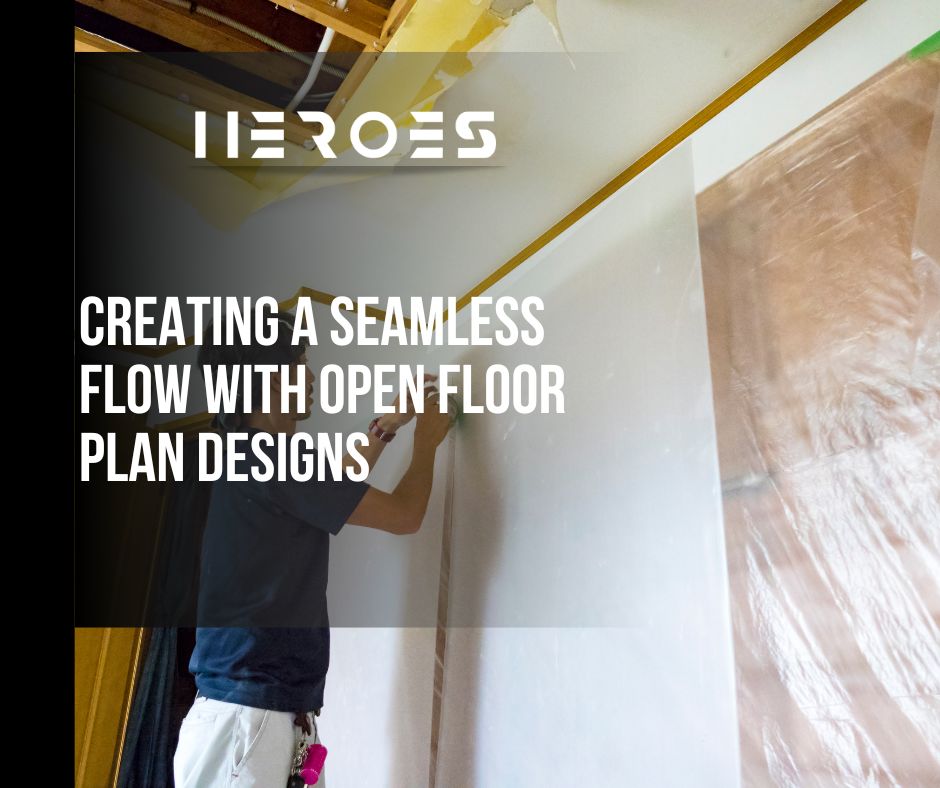In the realm of architectural and interior design, the concept of open floor plan designs has emerged as a compelling approach to create a seamless flow in living spaces. This architectural trend, which integrates various rooms into a unified, functional space, offers a range of benefits including enhanced natural light, ease of interaction, and the illusion of a larger space.
However, achieving a home remodeling balance within an open floor plan requires a comprehensive understanding of design principles, strategic furniture placement, and judicious use of color and texture. While the concept may seem straightforward, it presents unique challenges that can make or break the aesthetic and functional success of your space.
As we embark on this discussion, we will explore the essentials of open floor plans and how to effectively navigate the complexities they present.
Mastering Open Floor Plan Basics:
The homeowner’s understanding of the basics is imperative for mastering the open floor plan design, a popular concept in modern architecture. This style, characterized by large, unobstructed spaces and minimalistic use of walls, fosters a sense of community, togetherness, and unrestricted movement.
Key considerations include a strategic placement of furniture to delineate different zones without disrupting the visual flow. Additionally, the right choice of color and materials can enhance the sense of spatial continuity. Lighting also plays a vital role in creating a harmonious balance between the various sections of the open floor plan.
Ultimately, a well-designed open floor plan can effectively serve different needs, promote social interaction, and provide a sense of aesthetic pleasure and belonging.
Strategic Furniture Placement Tips:
Building on the concept of mastering open floor plan designs, insightful approaches to furniture placement become pivotal in defining distinct spaces while maintaining an overarching sense of unity.
- Functionality First: Prioritize the purpose of each area. Furniture should support the intended use, e.g., a reading nook needs a comfortable chair and good lighting.
- Visual Hierarchy: Create a focal point in each area. This can be achieved with a statement piece of furniture or artwork. It will draw the eye and provide a sense of structure the home remodeling.
- Space and Flow: Ensure ample space for movement. Arrange furniture to encourage natural flow between areas.
Clever furniture placement can enhance the functionality and aesthetics of an open floor plan, creating a harmonious living environment that resonates with a sense of belonging.



